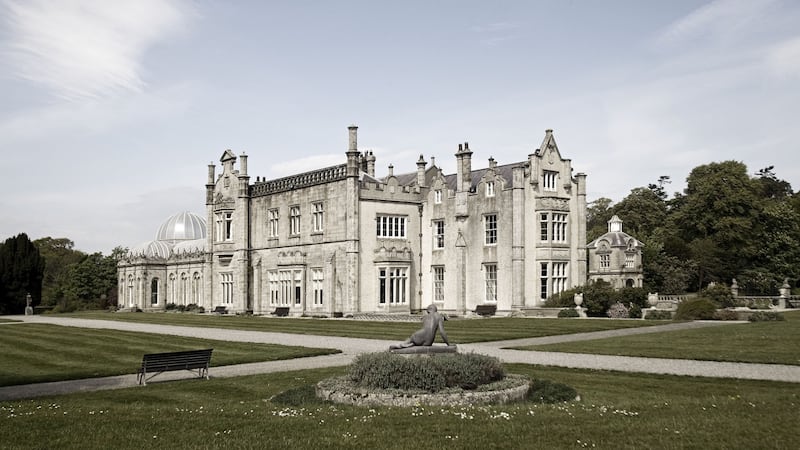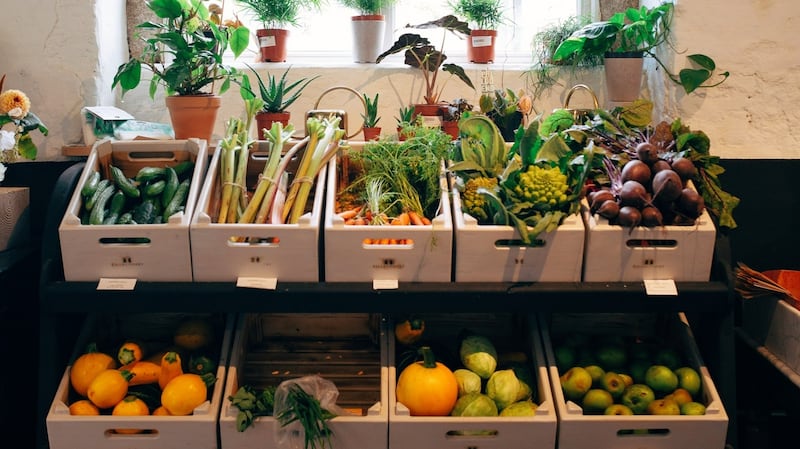As historic Irish gardens go, Killruddery surely has it all:a heart-achingly beautiful house set within a gloriously scenic location, surrounded by ancient woodlands and overlooked by the brooding Wicklow mountains; an exceptionally benign growing climate, where harsh frosts very rarely hit as a result of the moderating effect of the nearby Irish Sea; a fascinating, centuries-old history of cultivation that links it to the great French landscape architect, Andre le Notre, architect of the famous 17th-century formal gardens of Versailles; and last but certainly not least, an uninterrupted history of ownership and custodianship that has bound it to the same family, the Brabazons, since the mid-1600s.
That really inspired me to start looking at ways to bring it back into proper productivity
Take a stroll around its gardens, located just outside Bray, Co Wicklow, and you’ll see the same formal, hedge-lined paths known as the Angles that were first laid out as pattes-d’oi or goosefeet more than 300 years ago. Its twin Long Ponds or Mirroirs d’Eau (each one is more than 168m long) still mirror the sky, just as their designer intended, their water supply still fed by gravity from reservoirs located high up in the Sugar Loaf mountain.
As if all that weren't enough, it's also home to an Italianate-style parterre, a wilderness, a giant beech circle and a sylvan theatre (an outdoor auditorium with tiered grass seats neatly enclosed by a hedge) that inspired the writings of Sir Walter Scott, all of it expertly cared for by head gardener Daragh Farren and his team.
Perhaps less well known is Killruddery's wonderful five-acre early Victorian kitchen walled garden, which has been lovingly restored and rejuvenated by Anthony Ardee (eldest son of the present Earl and Countess of Meath) and his wife Fionnuala over the past decade.

"We started back in 2008 with the restoration of the walled garden's Victorian pithouse [a type of glasshouse], which was carried out under the expert eye of well-known garden historian Finola Reid and with the help of a heritage grant from Fáilte Ireland, " explains Fionnuala, whose hands-on, can-do, collaborative approach to the project has been key to its success.
"At that point the pithouse was in a very poor state of repair while the garden's borders and orchards, which hadn't been in proper cultivation since the 1970s, were completely overgrown. But I remember talking to one of Killruddery's former farmer-gardeners – a fascinating man called Tom Jenkinson, then in his 80s – who told me that back in the 1950s the walled garden produced truckloads of fresh produce, potatoes, cabbage, leeks, onions, that was sent daily to the fruit and vegetable market in Dublin to be sold.
“That really inspired me to start looking at ways to bring it back into proper productivity. The aim was that, with time, the walled garden would eventually be able to supply the fruit, flowers, herbs and vegetables for the restaurant, shop and events that we planned to have at Killruddery.”
Twelve years on, Killruddery's walled kitchen garden does exactly that, churning out barrow-loads of delicious food and seasonal flowers during the growing season. Freshly harvested each day by its dedicated gardeners Volodymyr Popil and Maria Dragan, and its loyal band of garden volunteers who've also been key to the restoration project since its inception, everything is grown with a deep respect for the environment and for the principles of organic gardening.
“Right now we’re harvesting lots of different kinds of kale, potatoes, purple sprouting broccoli, romanesco, beetroot, onions, tomatoes, runner beans, chard, spinach, mixed salad leaves and herbs, plums and raspberries, it’s fantastic,” says Fionnuala, whose own love of gardening was nourished in her childhood.
“My parents had a smallholding in Donegal and then in west Clare, where we kept animals and grew our own food, so it’s always been a part of my life. I feel most myself when I’m in the garden.”
Recognising that one of the greatest challenges would be to dramatically scale up production to consistently meet demand, a few years ago the Ardees asked the well-known market gardener Dermot Carey to come on board as a consultant. He's done a huge amount to dramatically ramp up production, ensuring that the walled garden's vegetable beds and two giant polytunnels are filled with an ever-changing range of seasonal crops.

Wearing my flower-farming hat, I've also been delighted to be a small part of the project since early last year, helping to steer the creation of the large, long, sunny cut-flower border that runs alongside the garden's high stone walls. This summer we filled it with thousands of seasonal, sustainably grown cut-flowers, including dahlias, phlox, cosmos, sweet pea, sweet William, rudbeckia, amaranthus, bells of Ireland, love-in-a-mist, scabious, everlasting strawflowers and snapdragons; almost all of which we propagated from seed or tubers.
Many of the border's plants were raised this spring in the walled garden's glorious pithouse, now beautifully restored with the help of local craftsman Dermot Jeffers.
In a world that felt suddenly, brutally upturned by the pandemic, I’ll always remember the very special magic of standing in that light-filled, tranquil space where the only sound was birdsong, quietly pricking out seedlings and surrounded by the extravagant beauty of early flowering anemones and ranunculus destined to go as cut-flower bunches to the appreciative recipients of Killruddery’s click-and-collect box schemes.
Over the coming weeks that same process will begin afresh as Killruddery’s walled garden marks the end of one growing season and the beginning of yet another, an age-old seasonal cycle that’s as reassuring as it is rewarding.
I like to think that if its high stone walls could talk to me, they’d say that the garden very much approves.
Killruddery's gardens including its Victorian kitchen walled garden are open to the public until the end of October; its farm shop and Grain Store cafe remain open throughout the year. killruddery.com
This Week in the Garden
October is a good time of the year to add lime to acidic soils to raise their pH (a pH of between 6 and 7 is ideal for most plants), improve soil structure and increase the availability of plant nutrients. To check if your soil needs lime, do a simple soil pH test, available in kit form from most good garden centres. The amount of lime you’ll need to add will depend on the type of lime you’re using as well as your garden’s soil type; for example, a heavy clay may need up to three times more than a light soil. If in doubt, err on the side of caution. Also bear in mind that while most plants appreciate the addition of lime to the soil, some hate it (for example, ericaceous plants such as rhododendron, camellia, azalea and pieris.)
Seed of many different kinds of flowering perennials can be sown under cover at this time of year to give lots of plants for the price of no more than a few packets of seeds and some compost. Examples of species suitable for autumn sowing include achillea, verbascum, delphinium, Japanese anemone, aquilegia, helenium and echinops. Recommended suppliers include seedaholic.com, mrmiddleton.com and chilternseeds.co.uk











